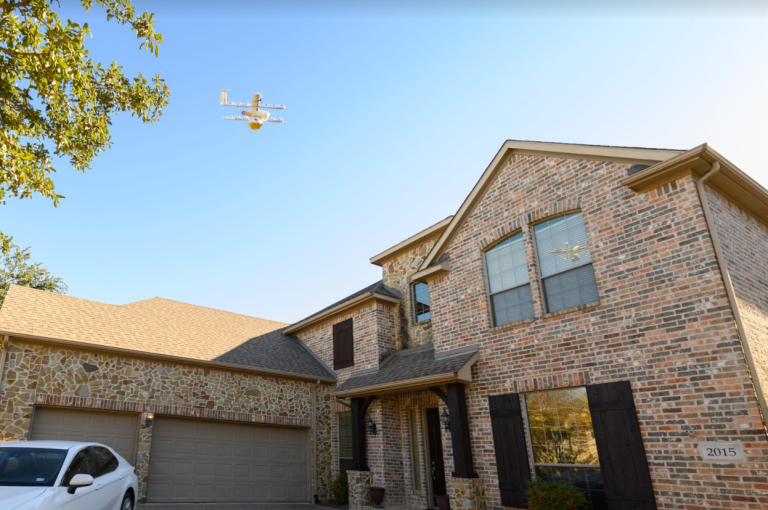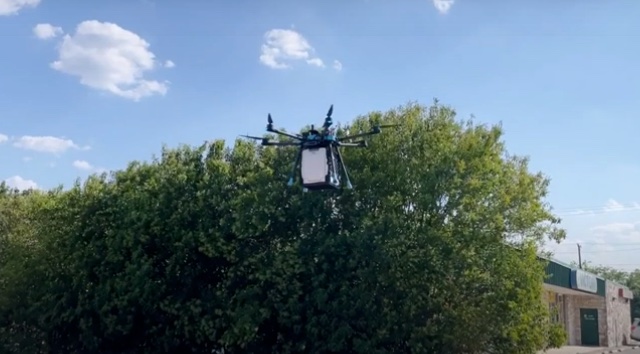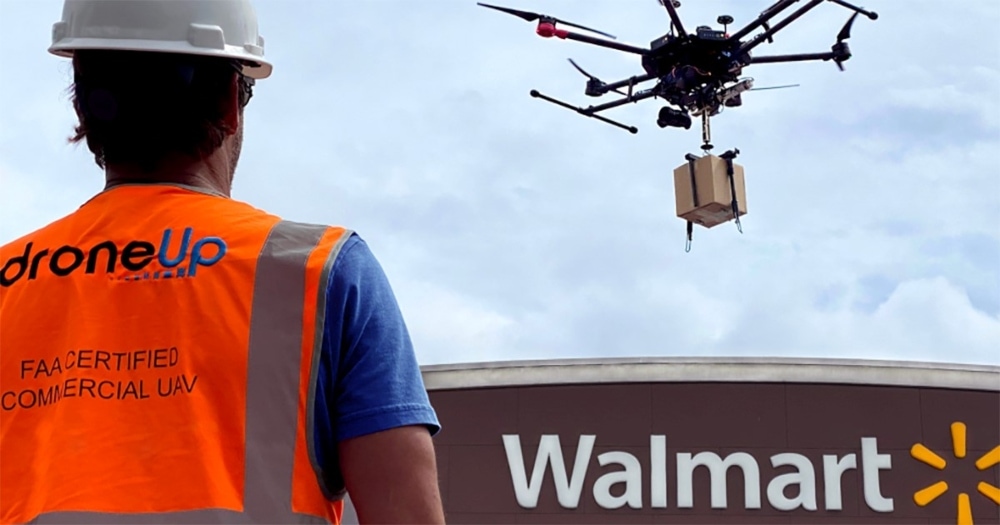What Is the Part 135 Certificate and How Are Companies Like Flytrex and DroneUp Scaling Drone Delivery without One?
BY Zacc Dukowitz
3 August 2022Five years ago drone delivery seemed like it might never happen.
Sure, there was a lot of talk, with some companies making the news for performing a single delivery as a publicity stunt.
But between technological limitations and regulatory barriers, it seemed somewhat unlikely that actual drone delivery programs would ever be launched in the U.S.
And yet they have—lots of them have launched, and even more will launch soon. DroneUp recently announced plans to reach four million people with drone delivery, Amazon Prime is finally starting deliveries in two American cities, and several other companies are doing drone deliveries every single day.

Credit: Wing
One big reason for these advances is the Part 135 certificate.
According to the FAA, the Part 135 certificate is “the only path for small drones to carry the property of another for compensation beyond visual line of sight.”
To put it simply, any company that wants to do drone delivery BVLOS needs to have a Part 135.
But getting one is complicated, time consuming, and expensive. So far, there are only four companies with Part 135s—Wing, UPS Flight Forward, Amazon Prime, and Zipline. (Zipline just got its Part 135 in June.)
All have deep pockets, with either alternate revenue streams or enough funding to hold out until their delivery permissions come through.
Given these challenges, some companies have decided not to wait for a Part 135, and instead begun doing drone deliveries within visual line of sight (VLOS)—Flytrex and DroneUp are prominent examples of this approach.
What Is the Part 135 Certificate?
The Part 135 Certificate was not invented for drone delivery.
Instead, it’s a certification process for smaller airlines that allows them to secure either:
- An Operating Certificate to perform passenger flights.
- An Air Carrier certificate to perform cargo transportation flights.
To create a certification process for drone delivery companies, the FAA modified the Part 135 Air Carrier certificate so that it would apply to uncrewed aerial vehicles being used to transport goods instead of the crewed ones for which it was made.
The FAA has adapted [the Part 135 certification process] for drone operations by granting exemptions for rules that don’t apply to drones, such as the requirement to carry the flight manuals on board the aircraft.
– The FAA
Prior to the Part 135, drone delivery companies had to pursue several different waivers, or one big one, which would allow them to do all the things required for a scalable drone delivery operation—flying BVLOS, over moving vehicles, and potentially over people.
The Part 135 streamlined this process, making it so companies could get a single certificate to perform all of the operations you need to do in order to make drone deliveries.

Credit: UPS Flight Forward
But getting one is not an easy or quick process. To do it, companies must follow the same long, involved steps they would have to follow if they were a small airline trying to get certified to operate.
Just how long does it take to complete the process?
To give you an idea, Drone Express, one of the companies currently going through the process, first started its work to get a Part 135 over three years ago.
There are all these big players—and little us.
– Beth Flippo, CEO of Drone Express
But Drone Express isn’t waiting to do drone delivery. Instead, it has started doing deliveries VLOS.
Last year it launched a pilot program with the grocery store chain Kroger. The pilot was so successful that Kroger extended it from the originally planned three months to nine months.
Alamo Airborne is another small company that’s pursuing a Part 135 while actively doing VLOS drone delivery. Based in San Antonio Texas, the company is currently using heavy lift modified Lucid Drone Tech C-1 for its deliveries, which can carry up to 25 pounds.

Alamo Airborne’s Lucid Drone Tech C-1 in flight
One of the main types of deliveries the company makes VLOS is for car parts to a mechanic whose location is difficult for delivery drivers to find. Alamo Airborne accepts the mechanic’s deliveries from UPS or elsewhere, then fly the parts to him.
The company is still in the early stages of its application, but is hopeful they’ll eventually be approved.
Why VLOS Drone Delivery Is Taking Off
At the opening of this article, we mentioned that DroneUp has announced plans to reach up to four million people with drone delivery.

Credit: DroneUp
Flytrex also recently announced plans to expand its drone delivery operations in Texas and North Carolina, doubling the number of people it can deliver to from 40,000 to 100,000.
But neither DroneUp nor Flytrex has a Part 135. And this means that both companies must be making their deliveries VLOS.
The interesting thing is that you don’t see this mentioned on their websites.
Which makes sense. On its face, there could be a fear that sharing the fact that you’re doing drone deliveries VLOS will seem limited, and may risk a perception that their abilities to deliver efficiently or to scale are limited.
But if that is the perception, it clearly isn’t true.
The fact that DroneUp has been able to grow its drone delivery efforts to such a huge size without flying BVLOS makes it clear that there is a way to scale and to deliver efficiently without a Part 135.
Further, some companies that do have a Part 135, such as Wing, only have a handful of drone programs in place in the U.S. And Amazon Prime, another Part 135 holder, is only now getting its delivery program off the ground.

Credit: Flytrex
It may not be fair to compare the two, since delivering BVLOS is admittedly more technologically complicated. But if the goal is simply to do drone delivery at all, it’s clear that flying VLOS seems to be working just fine for some companies.
When the Part 135 was first created for drone delivery it seemed like something that any company that wanted to do that kind of work would try to get.
As time goes on, it will be interesting to see if companies continue to pursue it, or if they’ll find creative ways to work within the existing regulatory framework without jumping through the hoops required to become an air carrier.


